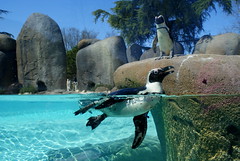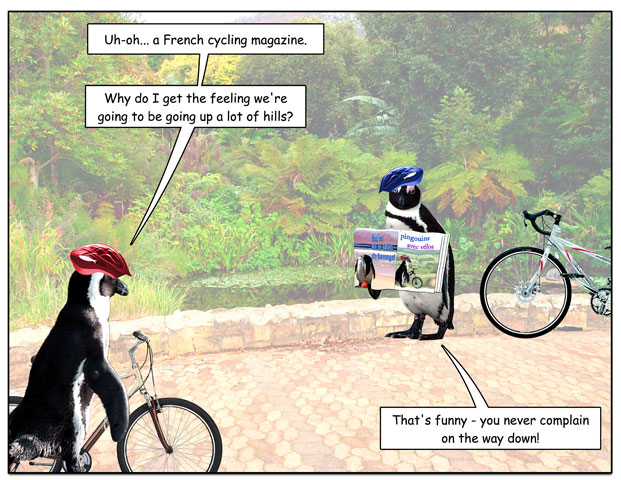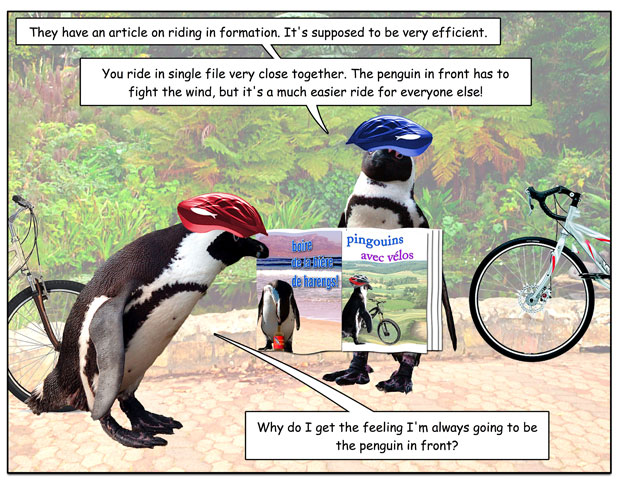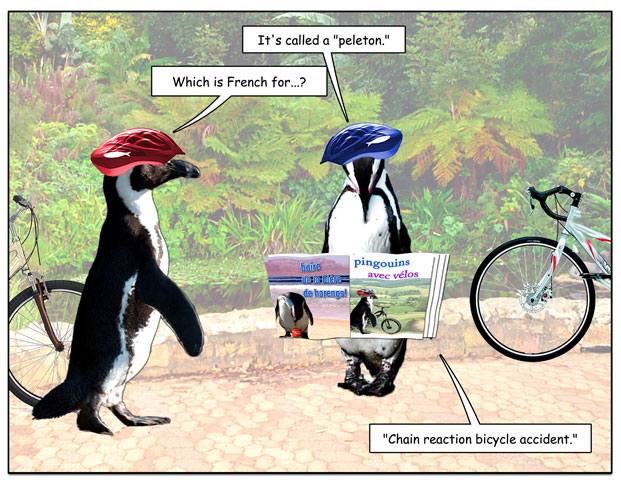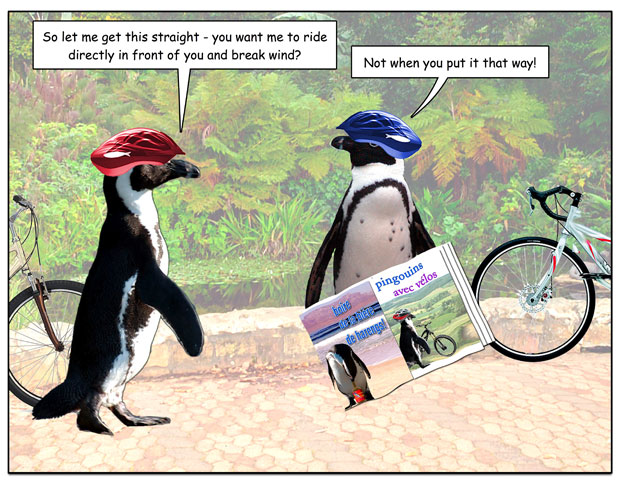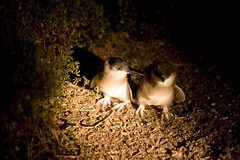Quick thinking and action by staff at Denver Zoo and Pueblo Zoo probably saved the life of an African penguin chick. On March 20, four days past its due date, the chick was assisted with emerging from its shell by Pueblo Zoo Animal Care Coordinator Melanie Pococke. Pococke then sought help from Denver Zoo staff in caring for the tiny bird, when the hatchling’s biological parents at Pueblo Zoo were unable to care for it.

Zookeepers from each zoo met halfway to bring the chick to Denver Zoo where it was placed under the care of experienced parents. The chick’s surrogate father, Durban, and mother, Spencer, are now taking excellent care of their adopted youngster.
 Zookeepers always prefer animals are raised by their parents or surrogates of the same species. This helps ensure they have the skills to raise their own young. Upon receiving the chick, Durban and Spencer immediately began “brooding” the chick by covering it with their bodies and wings for protection and quickly began feeding it.
Zookeepers always prefer animals are raised by their parents or surrogates of the same species. This helps ensure they have the skills to raise their own young. Upon receiving the chick, Durban and Spencer immediately began “brooding” the chick by covering it with their bodies and wings for protection and quickly began feeding it. 
Photo Credits: Photo Credit: Greg Henry/Denver Zoo
“It has been a great collaboration. We are fortunate to have such a strong network of experienced bird caretakers within our Colorado Zoos,” says Pococke, who has been involved with raising 47 penguin chicks in her 20-year career at the Pueblo Zoo.
“We had to act quickly in order for this to be a success,” says Area Supervisor of Birds Mary Jo Willis. “We’re so pleased to be able to help Pueblo Zoo on this project. We’re thrilled that the surrogate parents took to the chick so quickly.”
The chick will continue to be brooded and fed by the surrogate parents for about 3 months while the chick is covered in soft insulating feathers. During this time it is not visible to the public. Even in the wild, newly hatched penguins chicks don’t venture near water because they are covered with soft, downy feathers that provide good insulation on land, but would get soaked in the water. Eventually, though young penguins molt and grow in stiffer water repellant plumage.
African penguins are found in southern Africa. Although most people associate penguins with frigid temperatures, African penguins enjoy warmer weather. Even they have their limits, though. In the wild are mostly crepuscular – meaning, they are most active at dawn and dusk when temperatures are more comfortable in their warm weather climate.
They grow to more than two-feet-tall and can weigh around 10 pounds. Their black and white patterns are unique to each penguin, like fingerprints on humans. More important, though the patterns serve as camouflage from predators in the wild as they are swimming. Seen from above, their dark backs blend in with the water. Seen from below, their white bellies blend in with the sky above.
The African penguin is listed as vulnerable by the International Union for the Conservation of Nature and Natural Resources (IUCN). They nearly faced extinction because their eggs were harvested for food and their droppings, guano, are an important burrowing material, but is often used by humans for fertilizer.
They have also been subjected to oil spills from tankers rounding the South African coastline, which have wiped out entire colonies of this species. In the past, Denver Zoo has sent staff to Cape Town, South Africa to assist with a world wide effort following the “Treasure” oil spill that affected over 40,000 penguins in 2000. Staff helped rehabilitate penguins by cleaning oil off their bodies and monitoring their health through lab and blood work. Of the penguins brought in for rehabilitation more than 95 percent were saved!
Source
Penguin couple adopt baby African penguin born at another zoo
Cooperation between two zoos in Colorado has helped save a newborn African penguin, a species that is classified as "vulnerable" to a high risk of extinction in the wild, according to the
International Union for Conservation of Nature and Natural Resources (IUCN).
On March 20 at the Pueblo Zoo, the African penguin chick finally emerged from its shell -- four days past its due date, reports the
Denver Post. When the tiny bird's biological parents couldn't care for it, Pueblo Zoo Animal Care Coordinator Melanie Pococke contacted the
Denver Zoo.
"Zookeepers from each zoo met halfway to bring the chick to Denver Zoo where it was placed under the care of experienced parents," says the Denver Zoo in a statement. "The chick’s surrogate father,
Durban, and mother, Spencer, are now taking excellent care of their adopted youngster."
The adoptive parents immediately began caring for the newborn by “brooding” the chick by covering it with their bodies and wings for protection and quickly began feeding it, says the Denver Zoo.
The chick will stay out of the public eye for the next three months as it "continues to be brooded and fed by the surrogate parents while the chick is covered in soft insulating feathers," according to the Denver Zoo. "Even in the wild, newly hatched penguins chicks don’t venture near water because they are covered with soft, downy feathers that provide good insulation on land, but would get soaked in the water," states the Denver Zoo. "Eventually, though young penguins molt and grow in stiffer water-repellent plumage."
In the wild, African penguins can be found in their native habitat, described as "24 islands and three mainland sites between Hollamsbird Island,
Namibia, and Bird Island, Algoa Bay,
South Africa," according to IUCN.
Over the last century, the population of wild African penguins have plummeted and is now 10% of what it used to be at the beginning of the 20th century, states the IUCN. "In the late 1970s, the population was estimated at 222,000 adults," states the IUCN. As of 2007, that number has dwindled to 72,000, and will continue decreasing at a rate of 17 to 51% over the next 20 years if there is no continuing rehabilitation, says the IUCN.
What's to account for African penguin's sharp decline in the wild? "Harvesting of eggs, reduction in the penguin’s food, removal of guano used by the penguins for burrowing sites and oil pollution from oil tankers," states the Denver Zoo.
Two oil spills in 1994 and 2000 are blamed for the killing of 30,000 African penguins. "Mortality from oilspills is serious and may increase if proposed development of harbours close to [African penguin] colonies proceeds," states the IUCN. "Most of the population is confined to just two areas, both near to major shipping ports."
African penguins are
black and white in color, as are most penguins, but are distinguished by the pattern of their coloring, described as "a white stripe encircling a black cheek and throat and a black horseshoe-shaped stripe across the chest," as well as "featherless pink areas around their eyes."
They are also known as the Black-Footed Penguin, or more colorfully, as the Jackass Penguin because they make "donkey-like braying" noises during courtship
Source.




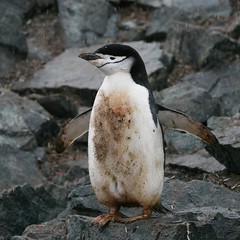



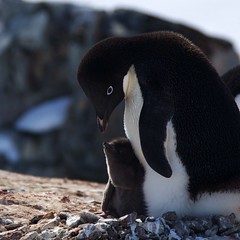



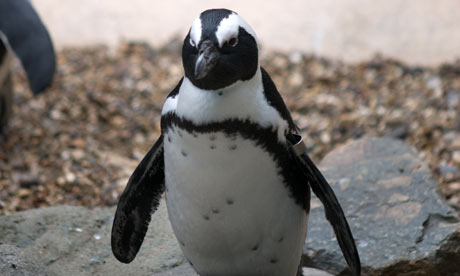
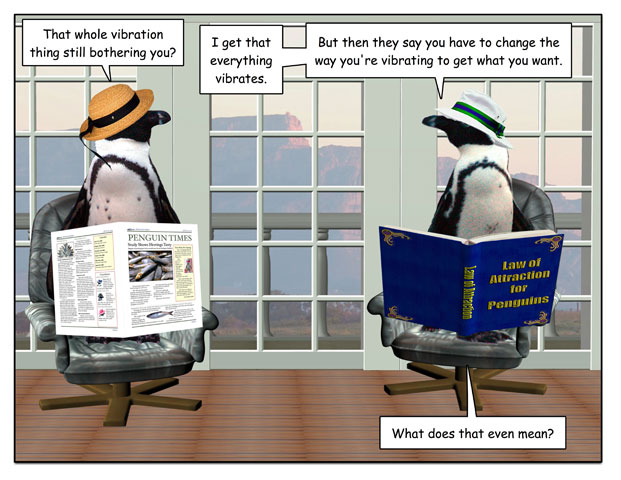


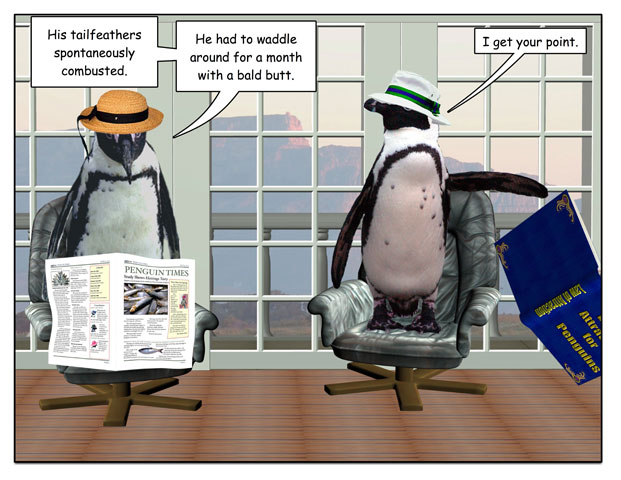











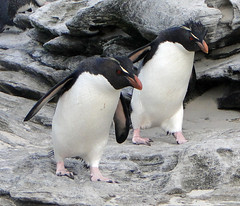
![[PENGUIN1]](http://si.wsj.net/public/resources/images/NA-BF553_PENGUI_F_20100419163939.jpg) Minden
Minden 


![[SB10001424052748704671904575194383287289928]](http://s.wsj.net/public/resources/images/OB-IF235_0418pe_D_20100419155418.jpg)
